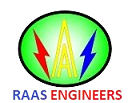Electrical rising mains play a crucial role in
distributing power within multi-story commercial buildings. Let’s explore their
key features:
- Function:
- Rising
mains deliver electricity across different levels of buildings, including
hospitals, car parks, and apartments.
- They
ensure seamless power supply to various floors.
- Components:
- Conductors: Rising mains use aluminum conductors
with bimetal aluminum/silver-plated copper contacts.
- Tap-off
Outlets:
Equipped with automatic shutters.
- Robust
Construction:
Designed to handle up to 4000A and withstand adverse
weather conditions.
An electrical bus duct,
also known as a busway, provides an alternative means of conducting
electricity in power distribution systems. It typically employs sheet metal,
welded metal, or cast resin to enclose and isolate copper or aluminum
busbars. These busbars carry substantial electrical currents, serving as
pathways for electricity. Here are some key points about bus ducts:
- Purpose: Bus ducts are used to transmit
electricity, acting as an alternative to power cables or cable buses.
- Construction:
- The
bus duct structure consists of a grounded metal enclosure.
- Inside
this enclosure, you’ll find copper or aluminium busbars.
- These
busbars may be separated with gaps or “sandwiched” together.
- Individual
busbars are often coated with non-conductive materials like plastic.
- At
connection points, busbars flare out to facilitate linking to the next
segment.
- Variety:
- Bus
ducts can be rectangular (similar to cable trays) or circular.
- Some
systems allow plug-in devices (such as switches and motor starters) to be
easily moved, providing flexibility for changes in industrial setups.
- Bus
ducts can also power plug-in light fixtures and even IoT devices.
- Applications:
- Feeder
Busway:
Interconnects equipment, such as transformers and switchgear line-ups.
- Low-Impedance Busway: Designed for lower voltage drop due to close
spacing of busbars, reducing inductive reactance
.
